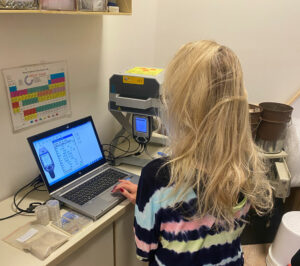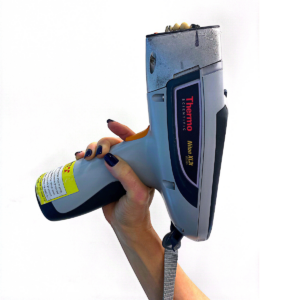Assay – Fire Assay vs. ICP in Assaying of Gold
Assaying is the process of analyzing the composition and purity of precious metals, such as gold, silver, and platinum. It is a critical step in the production and trade of these metals. There are various techniques used in assaying, and two of the most commonly used methods for gold are the fire assay and ICP assay.
Fire assay is a traditional method that has been used for hundreds of

years. It involves melting a small sample of the gold in a cuple, which is a small, porous cup made of bone ash. The cuple absorbs impurities, leaving behind a button of pure gold. The button is then weighed, and the purity of the gold is calculated based on the weight of the button and the original sample.
ICP (Inductively Coupled Plasma) assay is a more modern technique that uses spectroscopy to determine the composition of a sample. The sample is dissolved in acid and then sprayed into an ICP machine, which ionizes the elements in the sample. The machine then measures the intensity of the light emitted by each ion, which allows the composition of the sample to be determined.
While both methods can be used to assay gold, fire assay is considered the more accurate method for determining the purity of the metal.

This is because fire assay is better at removing impurities from the sample, and it is less susceptible to interference from other elements that may be present in the sample. ICP assay, on the other hand, gives more information on all other alloy components and is commonly used for routine analysis of gold samples. ICP equipment is more expensive and requires trained staff.
In summary, while both fire assay and ICP assay can be used for assaying gold, fire assay is considered the more accurate method for determining the purity of the metal, while ICP method commonly used for routine analysis as it gives wider picture of alloy components which one might need for environmental issues. Most small refiners that treat only gold and silver usually prefer the fire assay method.
Additional Assay Methods: XRF, LIBS, and Atomic Absorption
 Besides the traditional fire assay and the modern ICP assay, there are several other techniques available for assaying gold that offer unique advantages depending on the specific requirements of the assay. X-ray fluorescence (XRF) is a non-
Besides the traditional fire assay and the modern ICP assay, there are several other techniques available for assaying gold that offer unique advantages depending on the specific requirements of the assay. X-ray fluorescence (XRF) is a non-
destructive analytical technique that can quickly determine the composition of metals by measuring the fluorescent (or secondary) X-

ray emitted from a sample when it is excited by a primary X-ray source. This method is highly favored for its rapid analysis time and minimal sample preparation.
Laser-induced breakdown spectroscopy (LIBS) is another sophisticated technique that involves focusing a high-powered laser on the sample to create a plasma light, which can then be analyzed to determine the elemental composition of the material. This method is useful for conducting a fast, in-situ analysis without the need for sample preparation.
Atomic absorption spectroscopy (AAS) offers high sensitivity by measuring the absorption of optical radiation (light) by free atoms in the gaseous state. This technique is particularly effective for detecting trace amounts of metals in samples and is widely used in regulatory environments and quality control.
Each of these methods provides valuable information about the composition and purity of gold, and their use can complement the more traditional fire assay and ICP assays, especially in complex analytical scenarios where multiple elements need to be quantified accurately.







